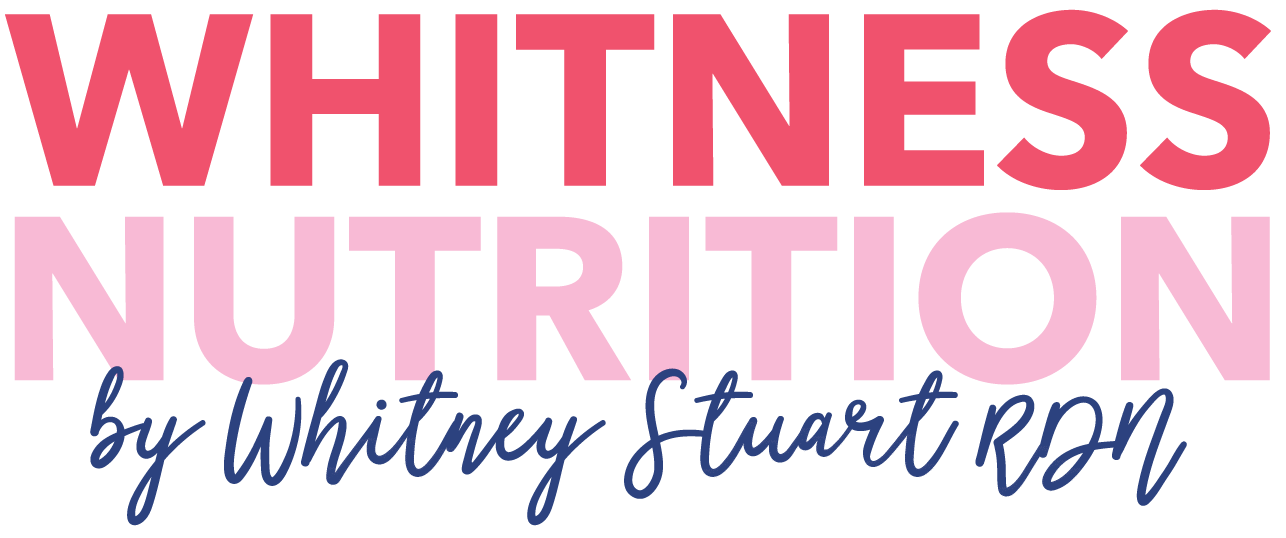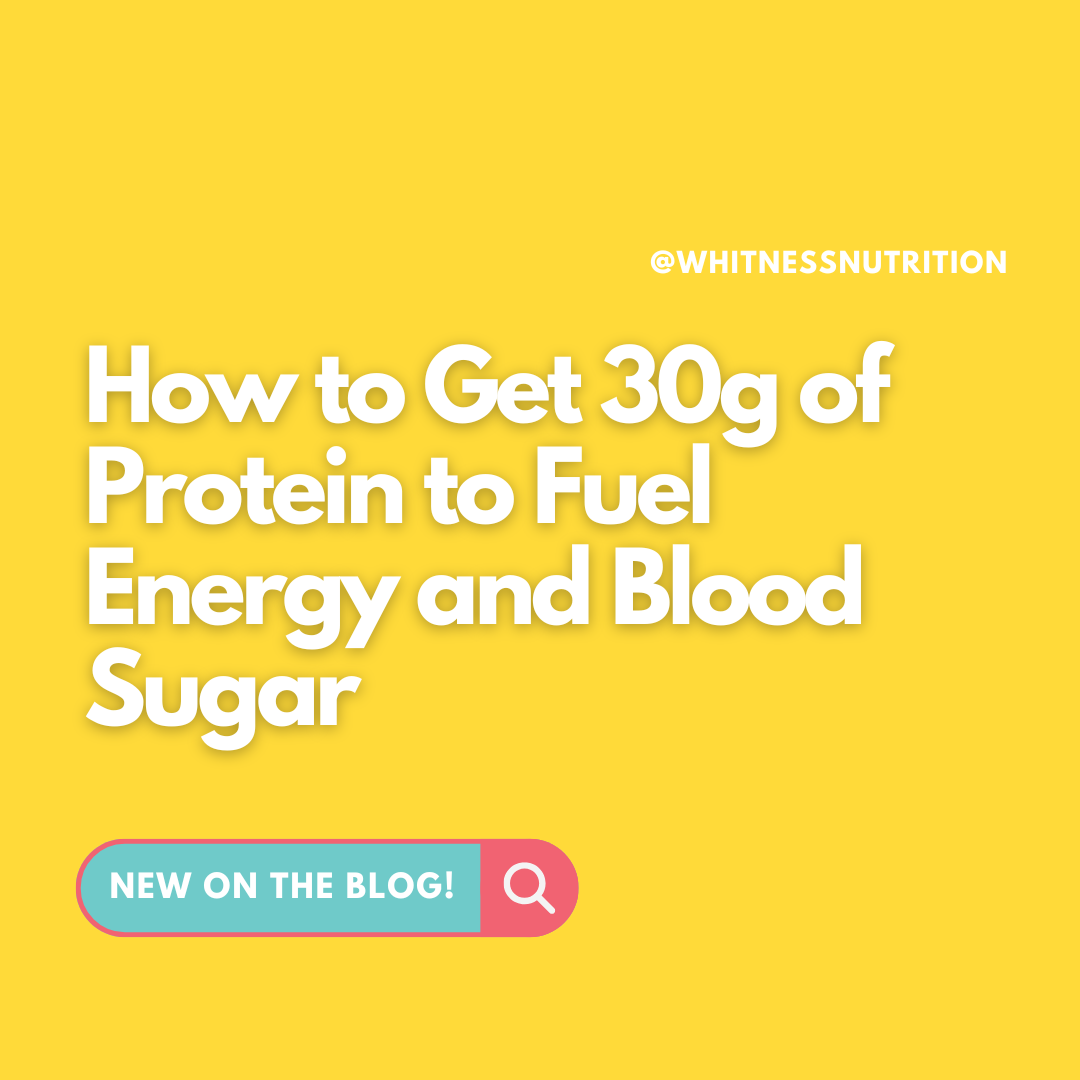How to Get 30g of Protein to Fuel Energy and Blood Sugar
Let’s clear something up: protein isn’t just for bodybuilders. It’s the fuel your body needs to build muscle, stabilize blood sugar, and support overall health.
Protein helps regulate appetite, balance hormones, and keep you full between meals, making it a key player in weight loss and metabolic stability. Adequate protein is non-negotiable, whether you’re managing diabetes, looking to improve body composition, or just want to eat smarter.
Many people think they eat enough protein—until they do the math. That’s where this guide comes in. I’m breaking down exactly how to get 30 grams of protein per meal using real food (and a few smart add-ons), so you can start your day with more energy and confidence.
How to Get 30g of Protein
Spoiler alert: Getting 30 grams of protein at each meal isn’t as complicated as you think—it just takes a little strategy. In this post, I’ll walk you through simple high-protein foods and easy swaps that get you to that sweet spot.
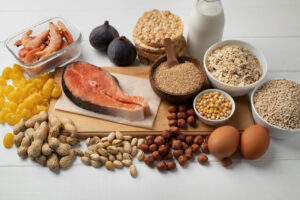
We’ll cover whole food sources like chicken breast, cottage cheese, and Greek yogurt, plus portion visuals (the size of a deck of cards) to make tracking easier.
You’ll also get a look at smart add-ons like egg white, boiled eggs, and the best protein powder for diabetics for when you need extra support. Whether you aim to build muscle, improve protein intake, or regulate blood sugar, this guide will help you hit your daily protein target confidently.
Because protein doesn’t just help you survive the day—it enables you to thrive through it.
Is 30g of Protein A Lot? (For Diabetics)
Not at all—and in fact, it may be precisely what your body needs. Research supports spreading protein intake evenly across the day, with at least 25–30g per meal, for optimal absorption and results. For individuals managing blood sugar, 30 grams of protein can help slow glucose absorption and minimize spikes after meals.
According to the American Diabetes Association and recent nutrition research, consuming adequate protein—especially from high—protein foods—improves satiety, insulin response, and body composition. In fact, many experts now recommend that each meal include around 30g of protein to preserve muscle mass, support hormone balance, and reduce cravings.
And don’t worry—getting that amount doesn’t require perfection or overhauling your entire routine. Think: one palm-sized chicken breast, a cup of cottage cheese, or a smoothie made with Greek yogurt and the best protein powder for diabetics.
For people with diabetes, it can be a game-changer in terms of energy, appetite, and weight regulation. And yes, it also makes you feel full (and empowered) for hours.
What Does 30g of Protein Look Like (For Diabetics)
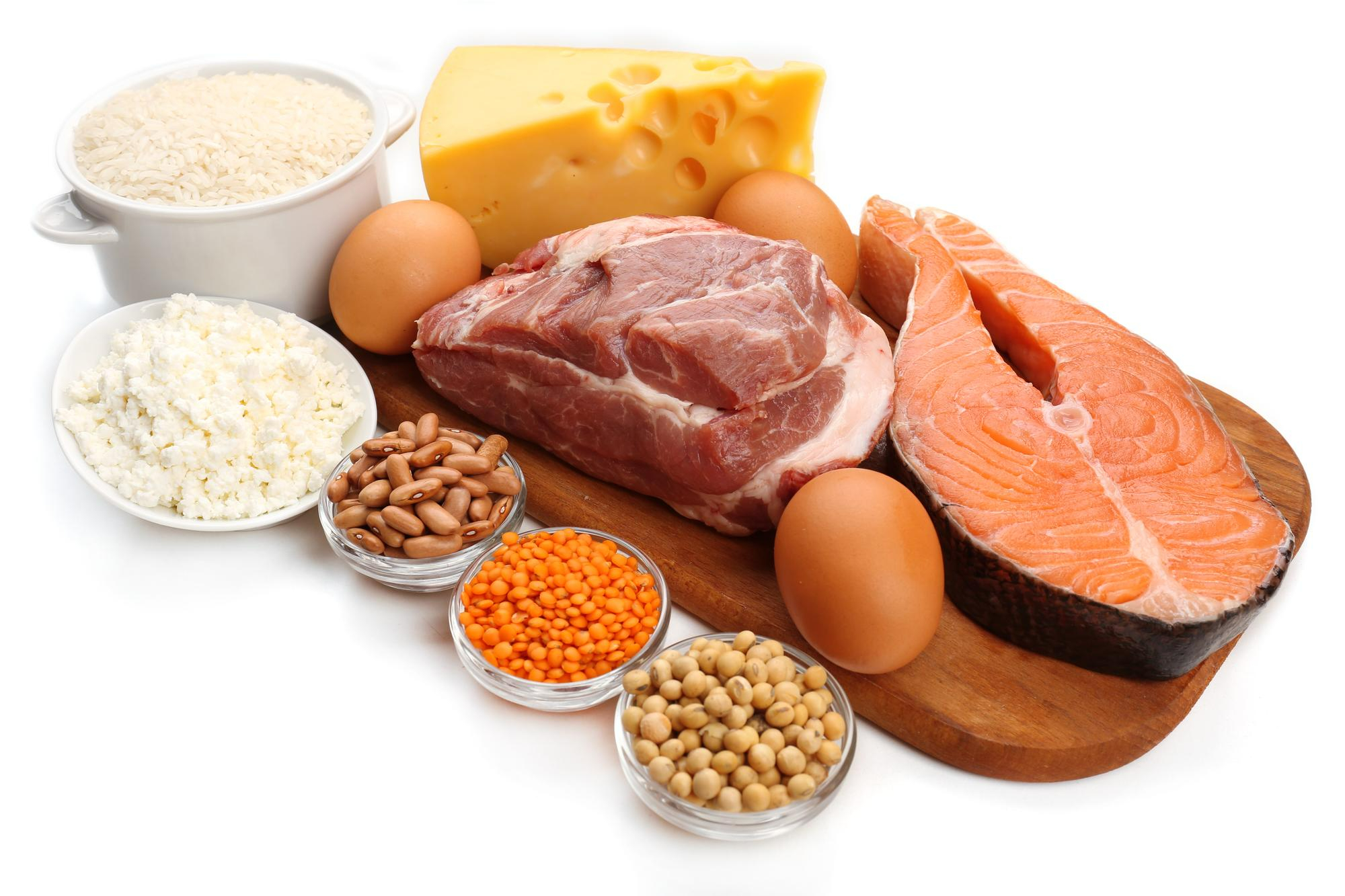
Let’s put this into real-life portions to build meals without guessing. Here’s what 30 grams of protein looks like from standard, accessible options:
-
Chicken Breast
A cooked chicken breast about the size of a deck of cards (4 oz) delivers roughly 30g of high-quality protein. This option is great for lunch or dinner and is easy to pair with roasted veggies, whole grains, or salad.
-
Greek Yogurt + Chia Seeds + Almond Butter
One cup of Greek yogurt (plain, non-fat) provides 20g of protein. Add 1 tbsp chia seeds (2g protein) and 1 tbsp almond butter (4g protein), then top with berries or a sprinkle of cinnamon for flavor and balance. You can also add the best protein powder for diabetics to reach or exceed 30g.
-
Cottage Cheese + Boiled Eggs
1 cup of cottage cheese gives about 25g of protein. Add 2 boiled eggs for an additional 6g. This combo is perfect for a no-prep, blood sugar-friendly snack or lunch.
-
Protein Smoothie
Combine 1 scoop of protein powder (with all essential amino acids), ½ cups Greek yogurt, and ½ cups unsweetened almond milk. For extra fiber and antioxidants, Add spinach, frozen berries, or 1 tbsp chia seeds.
-
Eggs + Egg Whites + Turkey Sausage
Want a hearty breakfast? Combine 2 eggs (12g), 4 egg whites (14g), and 1 small turkey sausage patty (5g). This combo not only hits your protein target but also keeps you full for hours.
-
Tofu or Tempeh
Looking for a plant-based or egg-free option? A 5-oz serving of tempeh offers about 30g of protein. Tofu is another great alternative, clocking in around 10g per ½ cup. Combine it with edamame or hemp seeds for a complete profile.
Aiming for 30 grams of protein per meal can feel like a stretch at first, but it becomes second nature with some visual cues and smart layering. Getting this amount of protein at every meal helps support your metabolism, hunger levels, and hormone function, which is significant for blood sugar stability and weight loss in those with diabetes.
-
Greek Yogurt + Chia Seeds
One cup of greek yogurt (plain, non-fat) has about 20g of protein. Add 1 tbsp of chia seeds or a scoop of the best protein powder for diabetics to bump it to 30g.
-
Cottage Cheese + Boiled Eggs
1 cup of cottage cheese offers about 25g of protein. Pair it with 2 boiled eggs (6g total) for a protein-packed, low-sugar meal.
-
Protein Smoothie
Blend 1 scoop of protein powder (look for one with all essential amino acids), ½ cup greek yogurt, and unsweetened almond milk for a blood sugar-friendly 30g smoothie.
-
Egg Whites + Eggs + Turkey Sausage
4 egg whites + 2 whole eggs + 1 turkey sausage patty = approx. 30g protein. This is a great option for breakfast lovers or anyone needing egg-free, high-protein ideas by subbing tofu or tempeh.
Aiming for 30 grams of protein per meal might initially feel ambitious, but it becomes second nature once you see it on your plate. And your overall health, metabolism, and energy will thank you.
How to Get 30g of Protein: Fueling Energy, Muscle, and Blood Sugar One Meal at a Time
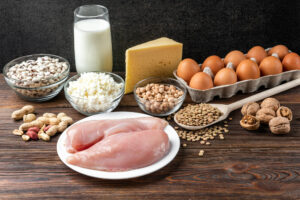
Hitting 30 grams of protein per meal might sound like a lot, but it’s entirely doable with a little planning—and no, you don’t need to carry around a food scale or eat like a bodybuilder. Here’s how to make it practical:
Start with a Solid Anchor
Every meal should begin with a protein anchor, like chicken breast, eggs, or cottage cheese. A 4 oz chicken breast (about the size of a deck of cards) already delivers 30g of high-quality protein. If you’re going plant-based, tempeh, tofu, or lentils can also do the trick with the right combinations.
Layer on Complementary Sources
Sometimes, one ingredient won’t get you all the way to 30g, but combining foods will. Pair 1 cup Greek yogurt (20g protein) with a scoop of protein powder or 1 tbsp chia seeds and almond butter to hit your target.
Use Protein Powder Strategically
While I love a real-food-first approach, there’s no shame in smart supplementation. The best protein powder for diabetics is low in carbs, contains all essential amino acids, and doesn’t spike blood sugar. Great for smoothies, oats, or baking.
Don’t Forget the Eggs (and Egg Whites)
Two whole eggs plus 3–4 egg whites gives you 20–25g of protein fast. Add a turkey sausage or top with shredded cheese, and you’re golden. They’re also portable—hello, boiled eggs on the go.
Build Your Plate Around Protein
Instead of thinking about protein as the side, make it the star. Add veggies and healthy fats around it. This mindset shift makes it easier to meet your daily protein goals consistently.
Prep Ahead
Meal prep your go-to high-protein foods, such as grilled chicken breast, hard-boiled eggs, or cottage cheese snack packs. Convenience matters when you’re busy, and it keeps your protein consumption consistent.
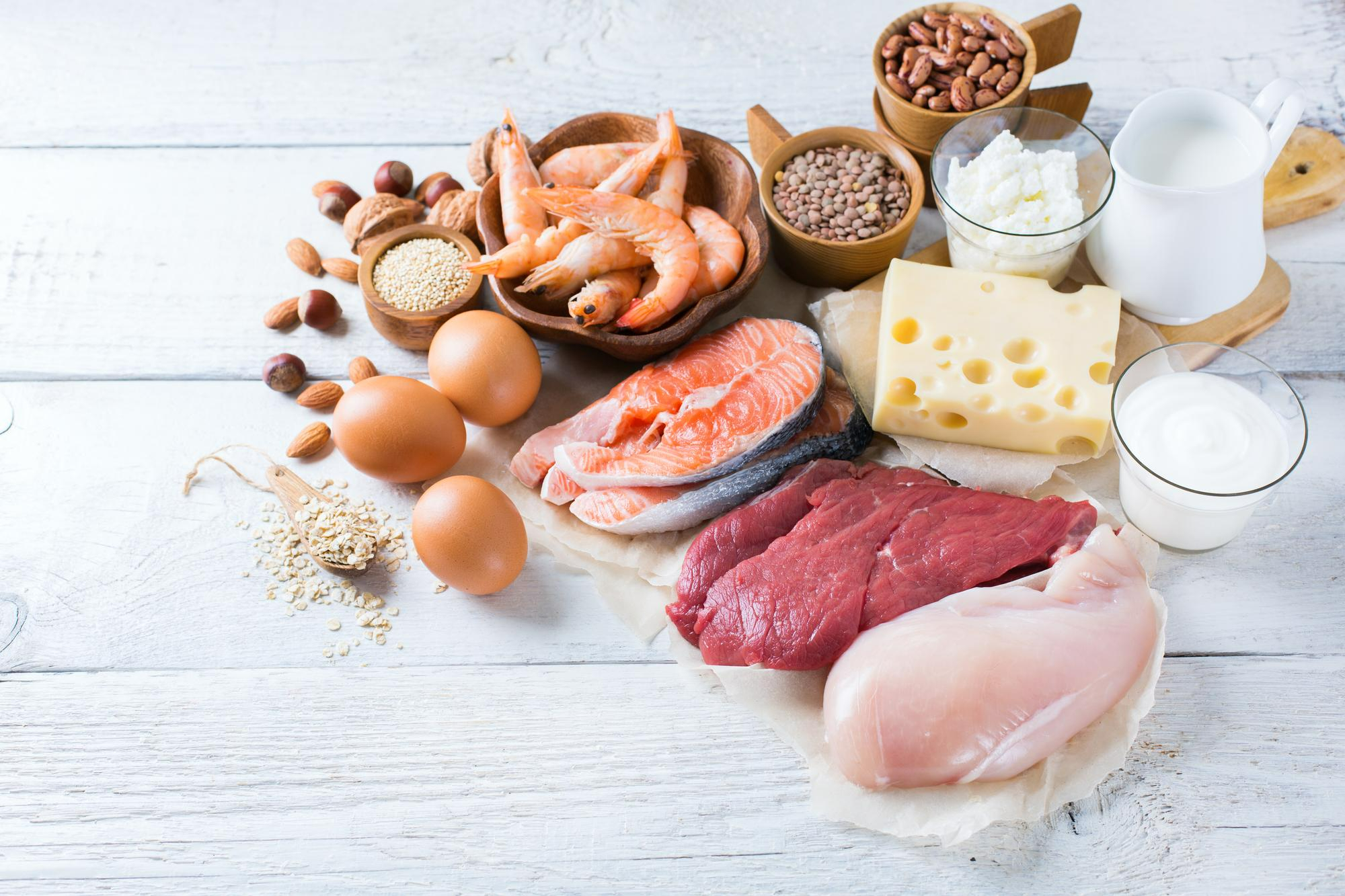
Final Thoughts
Meeting your protein intake goals doesn’t have to feel complicated or restrictive. Once you understand what 30 grams of protein looks like—and how to pair your favorite foods to get there—it becomes a seamless part of your routine. Whether you’re focused on weight loss, better energy, or stabilizing blood sugar, starting each meal with adequate protein is one of the simplest, most effective ways to build better health. And remember: real change starts one meal at a time.
Struggling to Hit Your Protein Goals Daily? Let’s Build a Plan That Works for You.
If this post helped you understand how to get 30g of protein per meal, imagine what personalized nutrition support could do for your energy, metabolism, and blood sugar. Book a free discovery call with Whitney Stuart. In just 15 minutes, we’ll map out your biggest roadblocks, explore custom strategies, and find the best next step for your goals.
🥩 Simple meals. Sustainable habits. Real results.
Book your Discovery Call here — because getting enough protein daily shouldn’t feel impossible.
